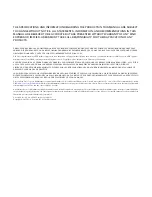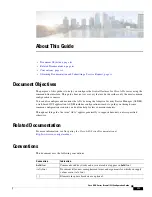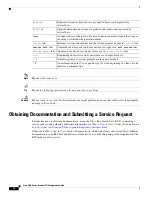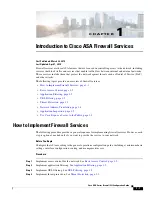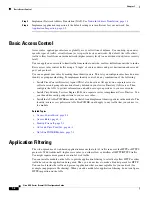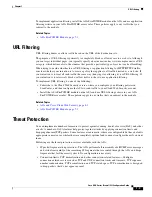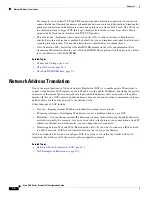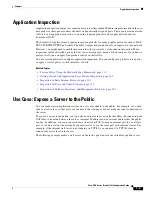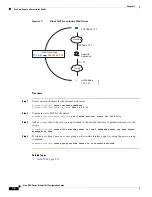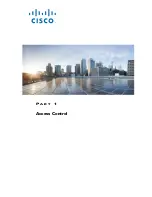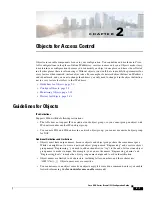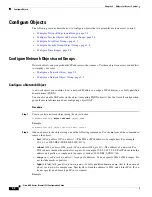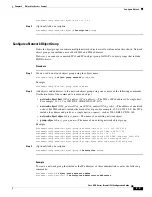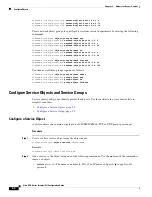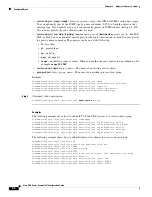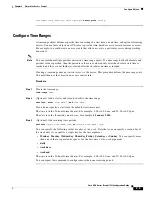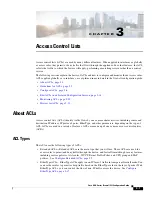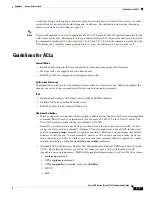
2-2
Cisco ASA Series Firewall CLI Configuration Guide
Chapter 2 Objects for Access Control
Configure Objects
Configure Objects
The following sections describe how to configure objects that are primarily used on access control.
•
Configure Network Objects and Groups, page 2-2
•
Configure Service Objects and Service Groups, page 2-4
•
Configure Local User Groups, page 2-7
•
Configure Security Group Object Groups, page 2-8
•
Configure Time Ranges, page 2-9
Configure Network Objects and Groups
Network objects and groups identify IP addresses or host names. Use these objects in access control lists
to simplify your rules.
•
Configure a Network Object, page 2-2
•
Configure a Network Object Group, page 2-3
Configure a Network Object
A network object can contain a host, a network IP address, a range of IP addresses, or a fully qualified
domain name (FQDN).
You can also enable NAT rules on the object (excepting FQDN objects). See the firewall configuration
guide for more information about configuring object NAT.
Procedure
Step 1
Create or edit a network object using the object name.
hostname(config)#
object network
object_name
Example
hostname(config)# object network email-server
Step 2
Add an address to the object using one of the following commands. Use the
no
form of the command to
remove the object.
•
host
{
IPv4_address
|
IPv6_address
}—The IPv4 or IPv6 address of a single host. For example,
10.1.1.1 or 2001:DB8::0DB8:800:200C:417A.
•
subnet
{
IPv4_address
IPv4_mask
|
IPv6_address
/
IPv6_prefix
}—The address of a network. For
IPv4 subnets, include the mask after a space, for example, 10.0.0.0 255.0.0.0. For IPv6, include the
address and prefix as a single unit (no spaces), such as 2001:DB8:0:CD30::/60.
•
range
start_address
end_address
—A range of addresses. You can specify IPv4 or IPv6 ranges. Do
not include masks or prefixes.
•
fqdn
[
v4
|
v6
]
fully_qualified_domain_name
—A fully-qualified domain name, that is, the name of
a host, such as www.example.com. Specify
v4
to limit the address to IPv4, and
v6
for IPv6. If you
do not specify an address type, IPv4 is assumed.
Example
Summary of Contents for ASA 5508-X
Page 11: ...P A R T 1 Access Control ...
Page 12: ......
Page 157: ...P A R T 2 Network Address Translation ...
Page 158: ......
Page 233: ...P A R T 3 Service Policies and Application Inspection ...
Page 234: ......
Page 379: ...P A R T 4 Connection Management and Threat Detection ...
Page 380: ......


